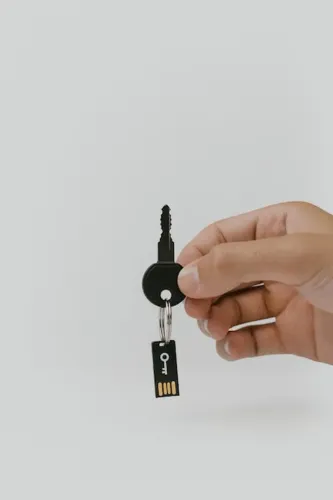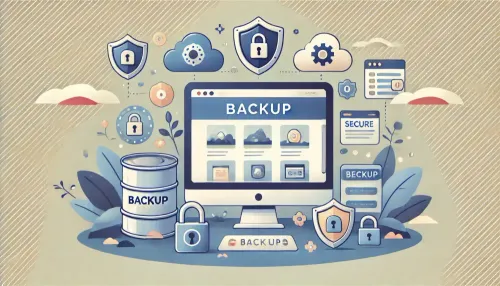In the ever-evolving landscape of the digital world, blogging has established itself as a powerful means of communication. Whether you're a seasoned blogger or just starting out, you've likely encountered the term "HTTPS" in discussions about website security. Secure Socket Layer (SSL) technology, commonly referred to as HTTPS, plays a pivotal role in safeguarding your blog and its visitors from online threats. In this article, we will demystify SSL and delve into why your blog needs HTTPS to thrive in today's digital ecosystem.
Understanding SSL and HTTPS
To embark on our journey of demystifying SSL, let's first understand the basics. SSL, or Secure Socket Layer, is a cryptographic protocol that ensures secure communication over a computer network. It establishes an encrypted connection between a user's web browser and the web server, safeguarding the data transmitted between the two parties from potential eavesdropping, data theft, and tampering.
HTTPS, or Hypertext Transfer Protocol Secure, is the combination of the HTTP protocol—the foundation of data communication on the web—and SSL/TLS (Transport Layer Security), the successor to SSL. Together, they create a secure and encrypted connection between the user's browser and the website's server, guaranteeing the privacy and integrity of data exchanged.
The Importance of SSL for Your Blog
Data Security: One of the primary reasons your blog needs HTTPS is data security. With cyber threats and hacking attempts on the rise, the security of your visitors' sensitive information should be a top priority. By implementing HTTPS, you create a secure channel for data transmission, protecting personal data, login credentials, and other sensitive information from falling into the wrong hands.
Trust and Credibility: Online users have become more vigilant about their online security. When visitors see the padlock symbol and "Secure" indicator in the address bar of their browser, they know their connection to your blog is encrypted and secure. This visual assurance enhances your blog's credibility, fostering trust between you and your readers.
SEO Boost: Search engines, such as Google, have explicitly stated that they favor HTTPS-enabled websites in search rankings. Websites with HTTPS enjoy a slight SEO advantage over their non-secure counterparts. Google's algorithm considers HTTPS as a positive ranking factor, which means that migrating to HTTPS could potentially improve your blog's visibility in search results.
Browser Compatibility: As internet browsers continue to evolve, many are becoming more stringent about security. Some browsers even flag non-HTTPS websites as "Not Secure," deterring users from visiting them. By migrating to HTTPS, you ensure that your blog remains accessible across all browsers and avoids any warnings that might discourage visitors.
Compliance with Data Protection Regulations: Depending on your geographical location and the nature of your blog, you might be subject to data protection regulations such as the General Data Protection Regulation (GDPR). HTTPS helps you meet the security and privacy requirements outlined in these regulations, preventing potential legal complications.
Implementing HTTPS: A Step-by-Step Guide
Now that we've established the importance of HTTPS, let's break down the process of implementing it on your blog.
Choose a Reliable SSL Certificate: There are several types of SSL certificates available, including Domain Validated (DV), Organization Validated (OV), and Extended Validation (EV) certificates. The type you choose depends on your blog's needs and the level of validation you require. Consult your hosting provider to determine the most suitable option.
Purchase or Obtain an SSL Certificate: SSL certificates can be obtained from reputable certificate authorities (CAs). Some hosting providers offer free SSL certificates through services like Let's Encrypt. Alternatively, you can purchase SSL certificates from well-known CAs to ensure the highest level of security and credibility.
Install the SSL Certificate: Installation processes vary depending on your hosting environment. Many hosting providers offer simple one-click installations, while others might require manual configuration. If you're not comfortable with technical aspects, seek assistance from your hosting provider or a web developer.
Update Internal Links: Once your website is secured with HTTPS, make sure all internal links on your blog are updated to use the "https://" protocol instead of "http://." This ensures a consistent and secure user experience.
Update External Links: If your blog includes external links, make an effort to update them to HTTPS whenever possible. While you can't control the security of external websites, linking to HTTPS sources contributes to a safer online environment for your readers.
Implement 301 Redirects: To prevent any disruption in traffic and maintain your SEO rankings, set up 301 redirects from the old HTTP URLs to their HTTPS counterparts. This guides users and search engines to the secure version of your blog.
Update Content Delivery Systems: If your blog uses content delivery networks (CDNs) or third-party plugins, ensure they are also configured to work seamlessly with HTTPS. This prevents mixed content issues, where secure and non-secure elements are loaded on the same page.
Security and trust are invaluable assets. Implementing HTTPS through SSL not only protects your visitors' data but also enhances your blog's credibility, improves its search engine rankings, and ensures compliance with data protection regulations.
With the step-by-step guide provided, you can confidently transition your blog to HTTPS, securing its future in the digital landscape. Embrace the power of SSL and watch your blog flourish as a secure and trustworthy online destination.






